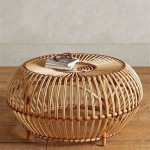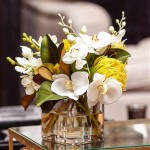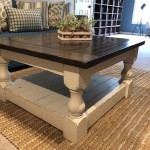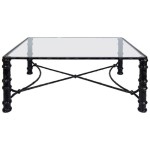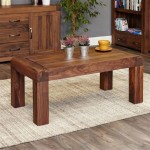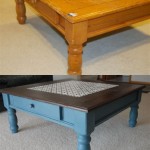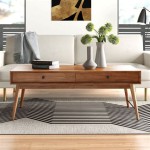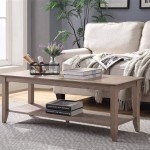An Introduction To Coffee Tables, Ottomans, and Chairs
The arrangement of furniture within a living space significantly impacts both its functionality and aesthetic appeal. Three essential pieces frequently found in living rooms and similar areas are coffee tables, ottomans, and chairs. Each plays a distinct role and contributes to the overall comfort and visual harmony of the room. Understanding the purpose, types, and coordinating strategies for these items is crucial for creating a well-designed and inviting environment.
This article provides an overview of coffee tables, ottomans, and chairs, exploring their individual characteristics and how they work together to enhance the living space. Consideration will be given to their functional aspects, style options, and ideal placement, allowing for informed decision-making when furnishing or redecorating.
The Versatile Coffee Table: History, Function, and Design
Coffee tables, as we know them today, emerged in the late Victorian era, evolving from lower tables used for tea ceremonies. Primarily designed to provide a convenient surface for placing drinks, books, and decorative items within reach of those seated, coffee tables have become a central focal point in many living rooms.
Beyond their practicality, coffee tables contribute significantly to the visual balance of the space. They help to anchor the seating arrangement and create a sense of cohesion. The selection of a coffee table should be informed by the room's overall style and the specific needs of its occupants. For instance, a family with young children might opt for a rounded or upholstered coffee table to minimize the risk of injury, while those who frequently entertain may prefer a larger surface area to accommodate more items.
Coffee tables come in a wide array of materials, shapes, and sizes. Wood is a classic choice, offering warmth and durability. Glass-topped tables provide a lighter, more modern feel, while metal frames can add an industrial edge. The shape of the table should complement the shape of the seating arrangement. Rectangular tables are well-suited for long sofas, while round or oval tables can soften the lines of a more angular setting. Square coffee tables provide a symmetrical and balanced feel. The size of the coffee table should be proportionate to the sofa; ideally, it should be about two-thirds the length of the sofa and positioned approximately 14-18 inches away.
Functionality can be further enhanced with features such as built-in drawers or shelves, providing additional storage space for remote controls, magazines, and other frequently used items. Some coffee tables also incorporate lift-top mechanisms, transforming them into temporary work surfaces or dining tables. Choosing the right coffee table involves a careful assessment of your space, style preferences, and functional requirements.
The Ottoman: Comfort, Versatility, and Style
Ottomans originated in the Ottoman Empire, where they were used as low, upholstered seats without backs or arms. They were traditionally placed along the walls of rooms, providing comfortable seating options. Over time, ottomans evolved into versatile pieces of furniture with multiple functions.
While ottomans can serve as seating, particularly when extra guests arrive, their primary function is often to provide a comfortable place to rest one's feet. This makes them an ideal accompaniment to sofas and chairs, enhancing relaxation and comfort. The ergonomic benefits of elevating the legs are well-documented, improving circulation and reducing muscle strain.
Beyond comfort, ottomans can also function as coffee tables, especially when topped with a tray. This provides a stable surface for drinks and snacks while maintaining the ottoman's primary function as a footrest. Upholstered ottomans offer a softer, more inviting alternative to traditional coffee tables, contributing to a more relaxed atmosphere.
Ottomans are available in a variety of shapes, sizes, and upholstery options, allowing for seamless integration into any décor. Round ottomans can soften the lines of a room, while rectangular ottomans can provide a more structured feel. Storage ottomans offer the added benefit of concealed storage space, ideal for blankets, pillows, or other items that you want to keep within easy reach. Choosing the right ottoman involves considering its intended function, size, and style, ensuring that it complements the existing furniture and décor.
The placement of an ottoman is crucial for maximizing its functionality and aesthetic appeal. It should be positioned close enough to the sofa or chairs to allow for comfortable foot resting, but not so close that it obstructs movement. Consider the flow of traffic within the room and ensure that the ottoman does not create a tripping hazard. Experiment with different placements to find the optimal position that balances comfort and visual appeal.
The Essential Chair: Form, Function, and Focal Point
Chairs are arguably the most fundamental piece of furniture, providing a dedicated seating space for individuals. They have evolved significantly over centuries, from simple stools to elaborate armchairs, reflecting changing social customs and design trends.
In a living room setting, chairs serve multiple purposes. They provide additional seating for guests, create designated reading nooks, or simply offer a comfortable spot to relax and unwind. The selection of chairs should be guided by the intended function and the overall style of the room. A formal living room might feature elegant armchairs upholstered in luxurious fabrics, while a more casual space might incorporate comfortable lounge chairs with relaxed silhouettes.
Chairs come in a vast array of styles, each with its unique characteristics. Armchairs provide support for the arms and back, making them ideal for reading or conversation. Accent chairs are designed to add visual interest and personality to a room, often featuring bold colors, patterns, or unique shapes. Recliners offer the ultimate in comfort, allowing users to adjust the backrest and footrest for optimal relaxation. Side chairs are typically smaller and more lightweight, making them easy to move around as needed.
The materials used in chair construction also contribute to their overall style and durability. Wooden frames offer a classic and sturdy foundation, while metal frames provide a more modern and industrial aesthetic. Upholstery options range from luxurious leather to durable fabrics, each with its own unique texture and visual appeal. Consider the level of maintenance required for different materials when making your selection.
The placement of chairs is crucial for creating a balanced and inviting seating arrangement. They should be positioned to facilitate conversation and interaction, whether facing each other or arranged around a focal point such as a fireplace or television. Consider the sightlines within the room and ensure that chairs do not obstruct views or block pathways. Experiment with different arrangements to find the optimal layout that maximizes comfort and visual appeal.
When selecting chairs, it is important to consider not only their aesthetic appeal but also their ergonomic design. A well-designed chair should provide adequate support for the back and legs, promoting good posture and preventing discomfort. Test out different chairs to find ones that are comfortable for your body type and preferred seating position. The height of the chair should also be appropriate for the table or other furniture it is paired with.
Integrating coffee tables, ottomans, and chairs effectively involves considering their individual functions, styles, and placements, and how they interact with each other to create a unified and functional living space. The size and shape of the items chosen should correspond to the room's dimensions. Color and texture should be used to promote visual integrity.
Ultimately, the seamless integration of coffee tables, ottomans, and chairs creates an inviting, functional, and aesthetically pleasing living space tailored to the individual’s needs and preferences. The right selection and arrangement of these essential furniture elements can transform any room into a place of comfort and style.

How To Position And Style Coffee Tables Ottomans

25 5in Round Storage Ottoman Upholstered Coffee Table With Wooden Top 2 In 1end And For Living Room Office Dark Grey Com

How To Choose A Coffee Table Guide Crate Barrel

Hivvago 5 Piece Patio Furniture Set With Coffee Table And 2 Ottomans The Market Place

How To Choose A Coffee Table Guide Crate Barrel

Dropship 5 Pieces Lift Top Coffee Table Set With Storage Convertible Dining Ottomans To At A Lower Doba

Dropship 5 Pieces Lift Top Coffee Table Set With Storage Convertible Dining Ottomans To At A Lower Doba

Coffee Table Wikipedia

Grant Rectangular Leather Ottoman Rejuvenation

Volume Round Storage Drum Coffee Table Modern Living Room Furniture West Elm
Related Posts

